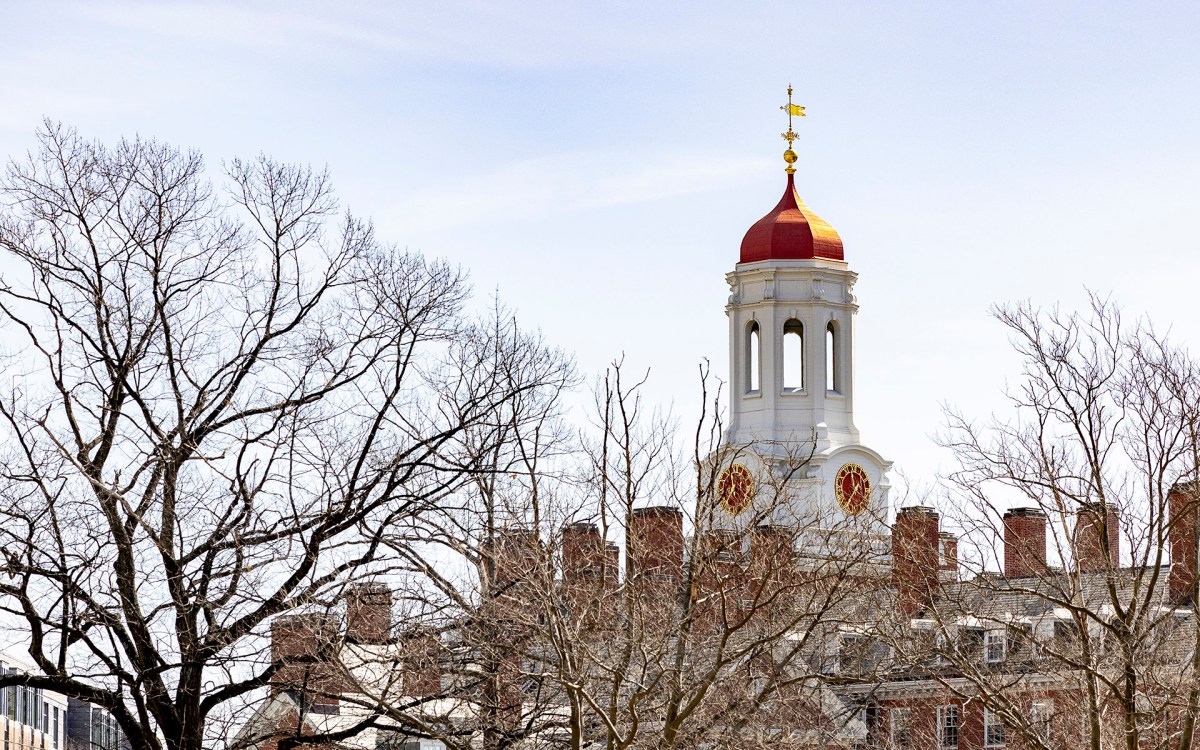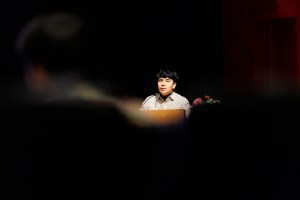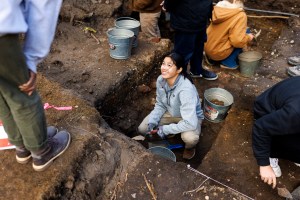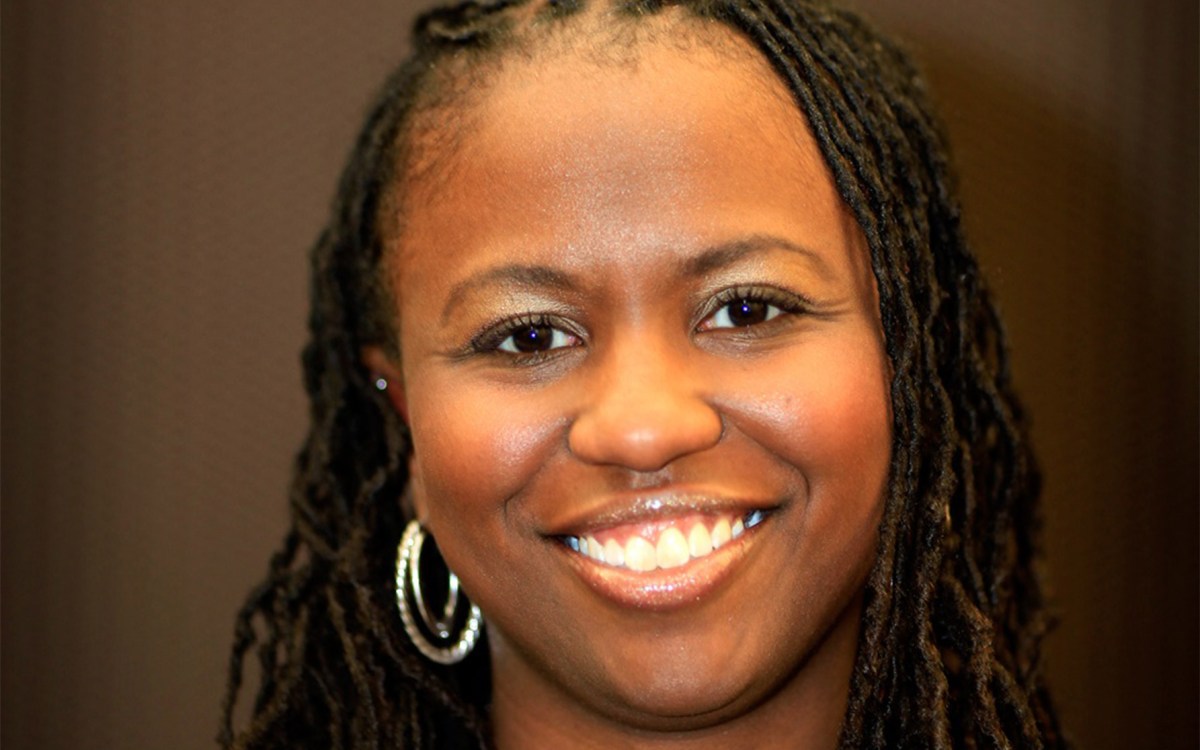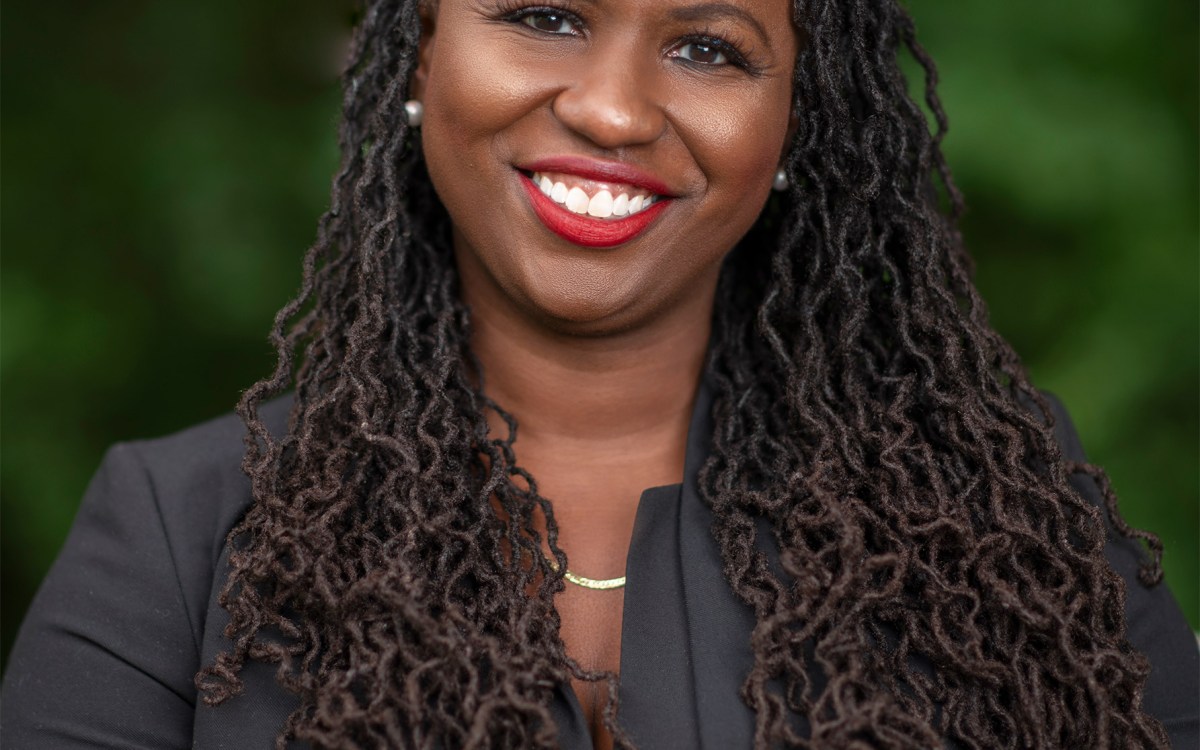Fresh strides in equity, diversity, inclusion, and belonging
Sherri Charleston reflects on her 1st year, outlines new five-year strategic model
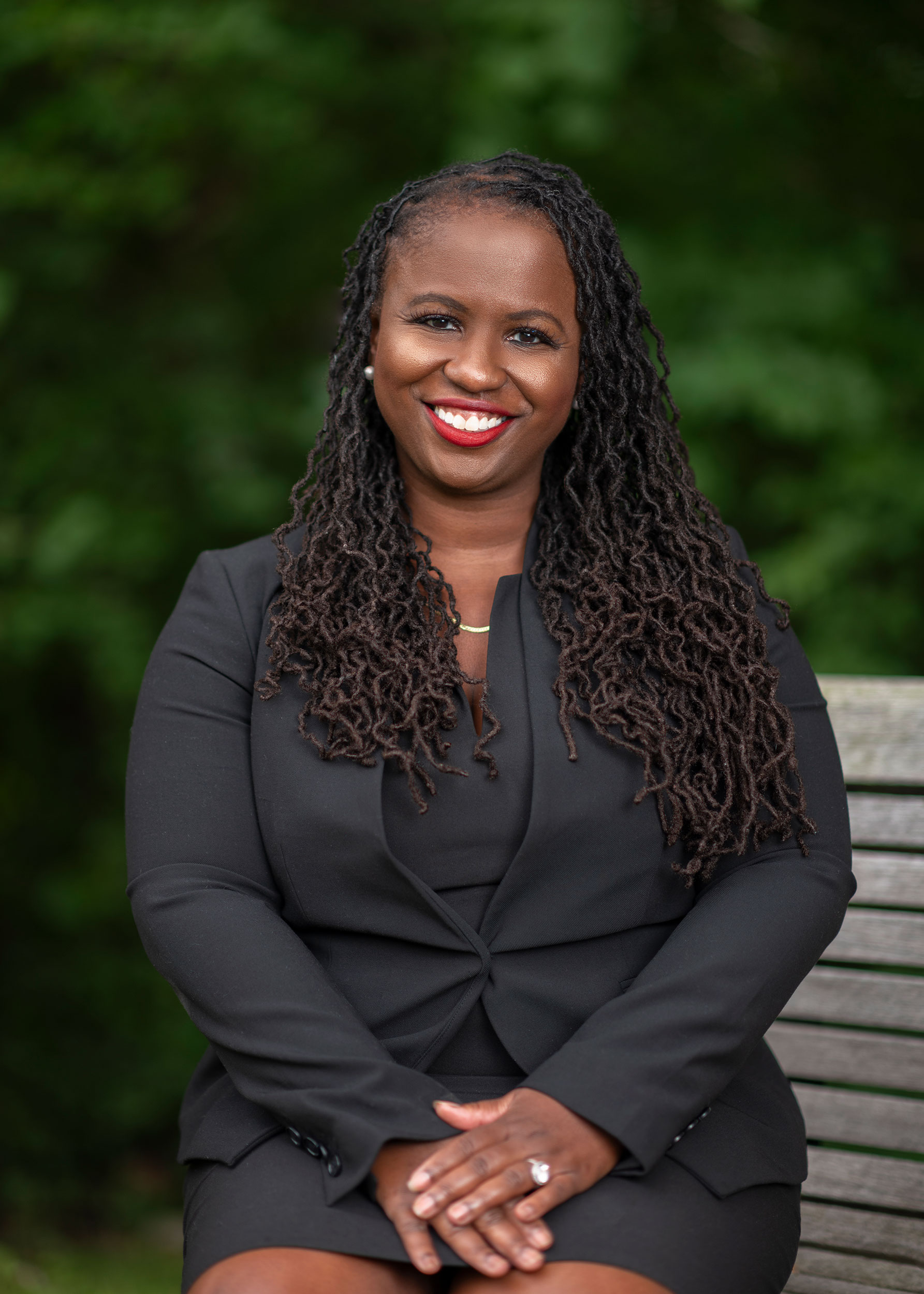
In her first four months, Sherri Charleston met with the Harvard community to help identify key areas for long-term strategic planning.
Tramaine Seay Photography ©
This week, the Office for Equity, Diversity, Inclusion and Belonging released its first Community Update under the leadership of chief diversity and inclusion officer Sherri Charleston, who began her work in the role in August of 2020.
The Gazette spoke with Charleston to hear her reflections on her first year-plus on the job, how she is building out the capacity of OEDIB (which was recently renamed), how her team has created new opportunities for community engagement and organizational excellence in their work over the past 14 months, and what her plans are for the future. This interview was edited for clarity and length.
Q&A
Sherri Charleston
GAZETTE: We last checked in with you about a year ago, when you had just begun in your role as chief diversity and inclusion officer at Harvard. How are things going now that you’ve been in the job for about 14 months?
CHARLESTON: I can’t believe it’s been 14 months since I started in this role. The time has really flown by.
I began my tenure at Harvard by listening, learning, and gathering data from the community. This was a critical first step. I spent the first four months connecting with members of the Inclusion and Belonging Task Force, leaders from across campus who had been driving this work for years, and approximately 2,500 members of the community. In all, we collected about 500 hours’ worth of listening data, which helped us identify key areas for long-term strategic planning that would allow OEDIB to have the broadest impact, both over the long term, and in the coming weeks and months. This helped us to develop a five-year strategic model to guide Harvard in our pursuit of inclusive excellence.
We have also worked to clarify what we mean by inclusive excellence. Inclusive excellence is a framework that embraces inclusivity and equity as foundational to the true excellence espoused in Harvard’s mission and is key to our ability to maintain our distinction as a great university. The aspiration to achieve inclusive excellence is an acknowledgment of the real value and excellence that is derived from including a diversity of people with unique experiences, skills, thoughts, backgrounds in the pursuit of common goals.
OEDIB’s mission is to champion and support inclusive excellence by helping to foster a campus culture where everyone can thrive. This is a community-wide effort that we catalyze by creating partnerships and convening campus stakeholders, by serving as a consultant in support of Schools, units, and central leadership, and by aligning equity, diversity, inclusion, belonging, and anti-racism initiatives across the University.
We’ve now embarked on the first phase of our five-year planning model. For the last 14 months we have been in our organizational phase — building our office and engaging a distributed group of leaders from across campus. In the next two phases we will work collectively with campus partners to establish our common goals and assess our shared progress.
GAZETTE: As part of this organizational phase, you have already been making important updates to the work of your office. One of the very prominent changes you’ve made is that, moving forward, the office will be called the Office for Equity, Diversity, Inclusion and Belonging. Tell us more about why the addition of “equity” is important and what that means for your work.
CHARLESTON: The decision to change the name was an outgrowth of the conversations we were having across campus; we heard a clear call from the community to articulate a focus on inclusion, belonging, and equity within the mission of the office. The word equity is so important to capturing the full breadth of OEDIB’s work, which, by the way, will still be pronounced “O-dib,” for those who know us by our acronym.
Also, the Affirmative Action/Equal Employment Opportunity team joined OEDIB last January. We’re proud to house their important mission in our office, and adding the word equity is an acknowledgment of their work.
GAZETTE: You’ve been expanding upon the capacity of your office in your short time at Harvard.
CHARLESTON: When we spoke a year ago, I talked about my four pillars for achieving inclusive excellence: organizational excellence, community engagement, asset-based approaches, and research-informed practices. The additions that we’ve made to the team, and plan to make moving forward, are reflective of those four pillars. We now have a senior director for administration and operations, and we have hired two new staff members, a senior outreach officer and a senior manager of community engagement, over the past six months. We will also fill two additional openings, one focused on equity, diversity, and inclusion learning, and one focused on research and assessment, in the months to come.
GAZETTE: OEDIB just released a community update. What can you tell us about this report?
CHARLESTON: We’re really excited for the community update, which details the University leadership’s commitment to EDIB work, our office’s progress in key areas over the past year, and highlights the important work of various campus partners.
I encourage everyone to read the update, as it is our way of communicating our progress and our plans going forward. To this end, we’ve also launched a new diversity and inclusion webpage at Harvard.edu that captures the breadth of work happening across Harvard, and that hopefully makes it easier to find information related to EDIB activities across the institution. These are both important steps in fulfilling our commitment to greater community involvement and to developing a shared vision for all members of the community.
GAZETTE: Tell us more about some of the new University efforts you’ve put in place since you began at Harvard.
CHARLESTON: Over the past year, we focused on building out the work within the pillars of community-wide engagement and organizational excellence and making advances in those areas.
In terms of community-wide engagement, we’ve focused on using targeted initiatives to improve campus coordination. We focused our work last year on two areas of concern: anxiety caused by the multiple pandemics (COVID-19, racial injustice, and polarization) and promoting dialogue across differences. In partnership with practitioners from Harvard University Health Services and the Harvard Chaplains, we hosted Community Spaces to support members of our community who were experiencing heightened anxiety in response to the issues of the time, including the ongoing pandemic, racial injustice, and a contested election. In the coming weeks, we will relaunch these as Affinity Spaces.
We also hosted a Community Dialogues series in partnership with the Office of the President and several schools, which featured a conversation with former Massachusetts Gov. Deval Patrick, and an event with Ted Olson and David Boies, the attorneys who argued Bush v. Gore. These events were designed to bring people into dialogue across difference. Other events that we co-hosted over the past year included Harvard’s first weeklong celebration of Juneteenth, the second annual Black, Indigenous, and people of color virtual welcome event, and a celebration of the 31st anniversary of the Americans with Disabilities Act.
On the organizational side, we’ve been working with campus partners, including the DIB Leadership Council, which is our network of chief diversity officers and associate and assistant deans for diversity, to establish a distributed model for advancing EDIB work. This academic year, we formed a new group with an expanded membership, the DIB Leadership Network, which met for the first time last week. The group seeks to connect individuals, create opportunities for collaboration, share best practices, provide professional development, and build capacity for the community of change-makers at Harvard. The DIB Leadership Network includes over 60 individuals from across campus who are working on issues of equity, diversity, inclusion, and belonging, whether as the designated lead or in a more informal capacity. This year the focus of our work will be on re-engaging with and reimaging our community.
GAZETTE: As part of the University Discrimination and Bullying Policy Steering Committee and Working Groups that were convened last January, you were asked by Provost Alan Garber to chair a Non-Discrimination Policy Working Group in order to examine how the University can best address forms of prohibited discrimination other than sexual and gender-based harassment. What can you tell us about the conversations that took place and recommendations that have emerged from that important project?
CHARLESTON: I’m grateful to Provost Garber, Deputy Provost Peggy Newell, and the deans for leading and supporting this effort toward cultural change, and to the members of our community who gave their insights and their feedback and helped us to better understand what the needs were. Representatives from all facets of the Harvard community, from faculty to staff, to postdocs, to students, to graduate students, and across Harvard’s Schools and units, were all a part of the process, not only in the formation of the actual working groups and their memberships, but also throughout listening sessions that have been convened since this past January. I’m hopeful that our community will see recommendations that will support our mission of creating a community where everyone can thrive.
GAZETTE: In many ways, your first year has been a difficult one, for many members of Harvard’s community and beyond. How would you reflect on starting in this role, amid the COVID-19 pandemic, and, as you said when we last spoke, during a time when the nation had reached a “boiling point” with regard to racial inequity?
CHARLESTON: When I started this journey a year ago, I believe I shared with you then that a colleague had said to me that Harvard is so much more than its buildings. Harvard is its people, who are warm, diverse, and welcoming. And that is absolutely true. I want to thank members of the Harvard community for being so supportive and for being so warm, and welcoming.
During my campus tour, I attended an online video meeting and was asked one particular question that I never forgot. I was asked, with everything that we have to accomplish and everything that lies ahead: What gives you hope? And I looked at each person on-screen and realized it was every one of them. As I said to them, every time I walk into a room of people who recognize that the work is not mine and mine alone, but see this as our shared commitment, it gives me hope, because it means that I have thousands of partners and co-laborers to do this work alongside. We know that the greater the diversity of a group, the greater our chances of solving even the most challenging problems. So that is what gives me both the hope and unwavering confidence that we will be able to solve our greatest problems together.
GAZETTE: And what does OEDIB have in store, looking ahead?
CHARLESTON: We have a couple of very exciting events I’d love for community members to take part in this week and next. This year’s first Affinity Spaces event will be on Thursday, Oct. 21, and other identity-based support events will follow throughout the year.
Also in October, we’re hosting “Lost and Found” events to support community mental health as we return to campus and a new normal. In addition to an on-campus event on Oct. 26 and an online event on Oct. 28, there is an online board to share reflections throughout the semester. We’re co-sponsoring this series alongside the Harvard chaplains and Memorial Church. Support will also be provided by Harvard University Health Services, Human Resources, Campus Services, and the University Police Department.
That said, the next phase in this journey will take time, intention, and will require all of us. I am grateful for the many community partners who have rolled up their sleeves, who have joined us at numerous events, and who have extended their thoughtful offers of support, as we chart our collective path forward. I look forward to continuing on this journey together, in community.
